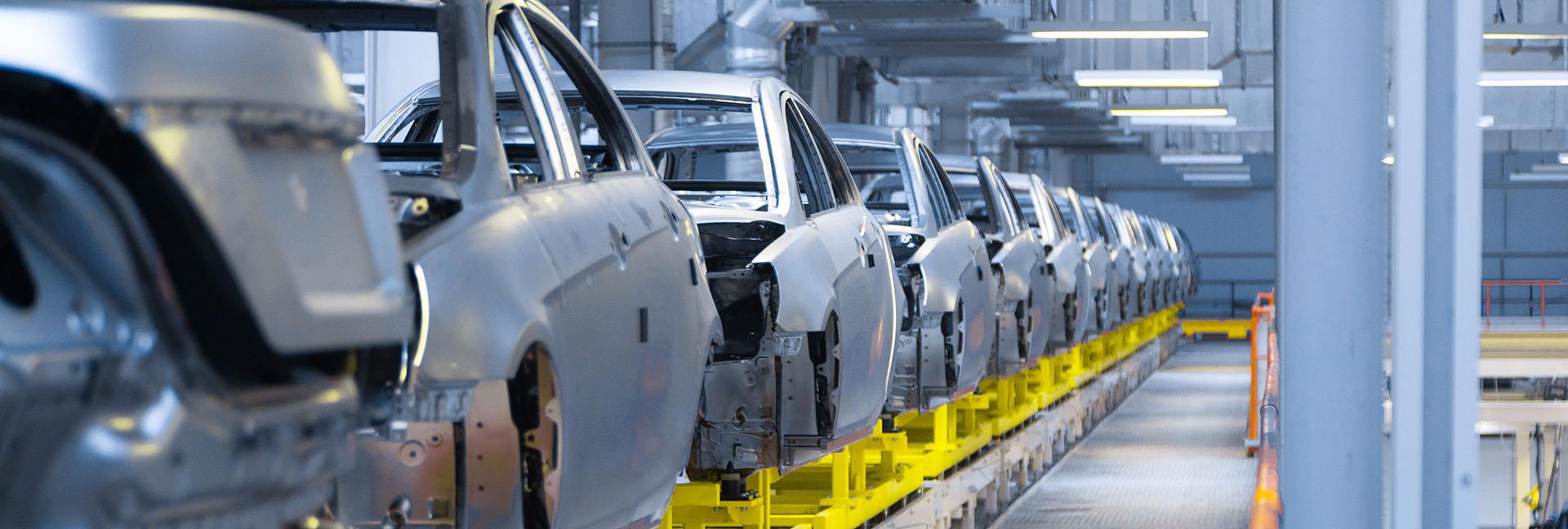
Sustainability Helps Shape Promising Future for Automotive Steel
by Bernard Swanson Jr, Senior Director - Product Development and Engineering
April 25, 2022
In the battle of public perception regarding the environmental sustainability of steel versus aluminum in the auto industry, aluminum proponents have long advanced a talking point that is compelling in its simplicity. It holds that since aluminum is lighter, vehicles with a higher ratio of aluminum to steel are likely to be more fuel efficient.
The point is logical as far as it goes. Its problem is that it doesn’t go nearly far enough. And what it misses makes a huge difference in the pursuit of sustainability, especially in light of recent technology advances in both the steel and automotive industries.
Innovations in steel design have greatly narrowed the gap of aluminum’s weight advantage, while steel continues to enjoy decided advantages in recyclability and manufacturing properties. Moreover, improved automotive battery technology is making steel a more attractive — and ultimately more sustainable — choice for supporting the growth of battery electric vehicles.
Light Weighting
Let’s look deeper at each of these factors, starting with weight. It’s important to remember that light weighting is not simply a matter of using a material with the lowest mass. In the auto industry, it requires optimizing the balance between weight and strength. Because steel is stronger than aluminum, auto bodies made of aluminum must be thicker to achieve the strength and safety of steel — and aluminum’s weight advantage is diminished.
With the introduction of advanced high strength steel (AHSS) more than a decade ago, the weight differential shrank even further. AHSS steels allow automakers to the achieve the strength of general steel grades using less material, hence achieving lower weights.
Now, further metallurgical advances are creating additional opportunities for automakers take advantage of steel’s combination of strength, formability and lower cost versus aluminum. U. S. Steel’s Generation 3 steel, 980 XG3™, can be stamped into even the most complex parts, which supports automakers’ desire for design flexibility, while offering the high-strength profile that enables the use of less material to lower weight.
Recyclability
Formability is a key sustainability advantage in more ways than one. In addition to supporting a wider range of car designs, it enables parts and panels to be stamped with less waste. Also consider that the smaller amount of steel waste generated in the stamping process can also be recycled more efficiently than aluminum, which requires costly and time-consuming sorting by grade. Scrap steel on the other hand, can be comingled.
Overall, recyclability strongly favors steel, which is the world’s most-recycled material. Steel is infinitely recyclable, and industry studies have determined that about 80 to 90 percent of the steel ever produced is still in use in some form. The automotive steel recycling story is even more compelling. Nearly 100 percent of vehicles that are taken out of service in the United States are recycled, which results in 15 million tons of steel scrap being recycled every year. That’s the equivalent of 11.6 million automobiles.
Cost Advantage for BEVs
Next, let’s consider the most impactful sustainability trend in the automotive industry today — the introduction and adoption of battery electric vehicles (BEVs). Conventional wisdom would say that light weighting is especially important in this market because a lighter vehicle can travel farther per battery charge. However, recent advances in battery technology have substantially improved battery efficiency and BEV range. Given that the weight difference between aluminum and steel bodies already has a relatively small impact on average range, introduction of new batteries will make the difference even less significant.
What is important to the sustainability story is consumers’ adoption of BEVs, and that is largely driven by price. Because steel costs substantially less than aluminum, automakers can offer consumers a lower sticker price, which makes their vehicles affordable to larger segment of the population. Indeed, many automakers who initially used aluminum construction for their electric vehicles are now switching to steel.
That’s not the end of the story, either. Ultimately, steel is the more sustainable choice when the entire lifecycle of the material is considered. One recent study compared lifecycle greenhouse gas emissions for an electric vehicle made from steel versus one made from aluminum. The study found a significant energy savings with steel, driven largely by a lower energy demand in the metal manufacturing process. The bottom line, according to the study, was that automakers could produce 17 percent more BEVs using AHSS with the same lifecycle energy demand of BEVs made with aluminum.
In a society increasingly focused on reducing the environmental impacts of greenhouse gas emissions, steel is the more sustainable choice in the automotive market. Understanding lifecycle energy analyses and the corollary benefits of steel might not make for a simple story, but it certainly is the most powerful one.
About the author

Bernie Swanson is Senior Director of Product Development and Engineering.
Forward-Looking Statements:
This webpage
contains information that may constitute "forward-looking
statements" within the meaning of Section 27A of the
Securities Act of 1933, as amended, and Section 21E of the
Securities Exchange Act of 1934, as amended. We intend the
forward-looking statements to be covered by the safe harbor
provisions for forward-looking statements in those sections.
Generally, we have identified such forward-looking
statements by using the words "believe," "expect," "intend,"
"estimate," "anticipate," "project," "target," "forecast,"
"aim," "should," "will," "may" and similar expressions or by
using future dates in connection with any discussion of,
among other things, the construction or operation of new or
existing facilities or operating capabilities, the timing,
size and form of share repurchase transactions, operating or
financial performance, trends, events or developments that
we expect or anticipate will occur in the future, statements
relating to volume changes, share of sales and earnings per
share changes, anticipated cost savings, potential capital
and operational cash improvements, changes in the global
economic environment, including supply and demand
conditions, inflation, interest rates, supply chain
disruptions and changes in prices for our products,
international trade duties and other aspects of
international trade policy, statements regarding our future
strategies, products and innovations, statements regarding
our greenhouse gas emissions reduction goals, statements
regarding existing or new regulations and statements
expressing general views about future operating results.
However, the absence of these words or similar expressions
does not mean that a statement is not forward-looking.
Forward-looking statements are not historical facts, but
instead represent only the Company's beliefs regarding
future events, many of which, by their nature, are
inherently uncertain and outside of the Company's control.
It is possible that the Company's actual results may differ,
possibly materially, from the anticipated results indicated
in these forward-looking statements. Management believes
that these forward-looking statements are reasonable as of
the time made. However, caution should be taken not to place
undue reliance on any such forward-looking statements
because such statements speak only as of the date when made.
Our Company undertakes no obligation to publicly update or
revise any forward-looking statements, whether as a result
of new information, future events or otherwise, except as
required by law. In addition, forward-looking statements are
subject to certain risks and uncertainties that could cause
actual results to differ materially from our Company's
historical experience and our present expectations or
projections. These risks and uncertainties include, but are
not limited to, the risks and uncertainties described on
this webpage and in "Item 1A. Risk Factors" in our Annual
Report on Form 10-K and those described from time to time in
our reports filed with the Securities and Exchange
Commission.